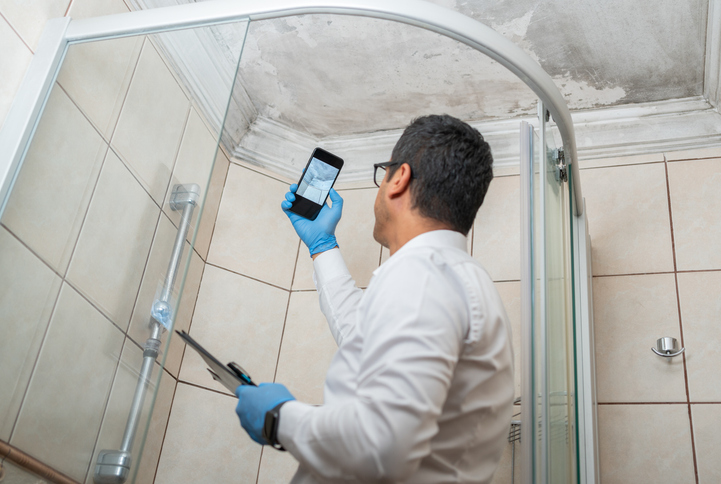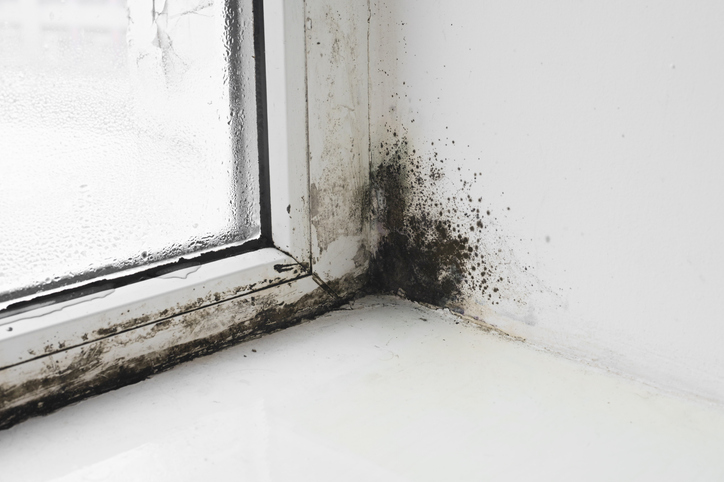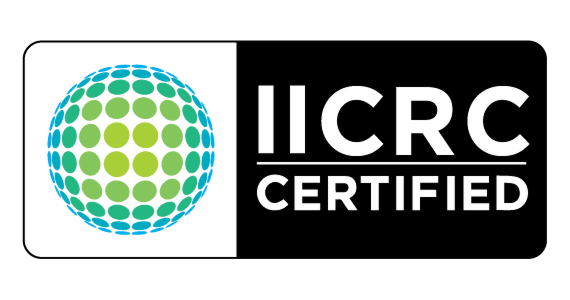Looking for professional mold testing and mold remediation services in Indianapolis, Indiana? Look no further! At Pure Air Environmental, we specialize in providing comprehensive mold solutions to ensure a healthy and safe living environment.
Our team of certified experts utilizes advanced techniques and state-of-the-art equipment to accurately assess mold presence in your property. If mold is detected, we offer efficient and effective mold remediation services to eliminate the problem at its source.
With our extensive experience and commitment to quality, you can trust us to restore your home to a mold-free condition. From Indianapolis to Anderson, don’t let mold compromise the air quality in your Indiana property. Contact us today for reliable mold testing and mold remediation services that you can count on.
As a small, family-owned and operated company, we are dedicated to protecting you and your family's health and well-being.
In addition to our services, we empower our customers with knowledge and information, all for an affordable price.
The heart of our business has been built on satisfied customer referrals, one healthy home and business at a time.
Large mold infestations can usually be seen or smelled. If mold is growing in your home or business, Pure Air Environmental can help with Indoor Air Quality samples analyzed by a local lab for immediate results! Contact us to learn more about our testing and treatment protocols so we can get your home or business running safely and smoothly with healthy pure air.


When you discover mold in your home or business, there’s no time to delay. Your health and your building’s well-being are on the line. Pure Air Environmental is here to make the mold removal process pain-free for you. Our trained and certified team will arrive quickly and get to work, carefully removing the mold and sanitizing the area. We’ll also help you get to the root of the water damage or excessive humidity problem that is causing mold damage on your property.
Dealing with mold on your property doesn’t have to be stressful or complicated. When you partner with our team, you’re only three steps away from a mold-free property and peace of mind.
Do you suspect mold growth in your home or business? It’s time to get answers. Give Pure Air Environmental a call.
We will arrive, inspect your property, take samples, and send them to a local lab to confirm or deny the presence of mold.
If the mold test comes back positive, we’ve got you covered. Our trained team works quickly to remediate the mold and restore safety to your property.
Although shower stalls and basements are typical moist areas prone to the growth of molds, any moist area in the home can harbor mold. Drywall, ceiling tiles, carpets, furniture, ductwork, roofing, paneling, wallpaper, and the areas around plumbing pipes are examples of areas in the home that can become infested by mold if the requisite growing conditions are present. Mold from the outdoors can enter the home through open doors, windows, and vents. It may also become attached to clothing, shoes, and pets and therefore be carried indoors. Mold can have many different colors and sometimes appears as spots. Additionally, a musty odor may be present. Mold growth may also be hidden underneath carpeting, on the back side of wallpaper, and behind drywall or paneling.
Molds produce irritating substances that may act as allergens (allergy-causing substances) in sensitive individuals. Furthermore, some molds produce toxic substances. Mold may not cause health effects or it may lead to symptoms in people who are sensitive to molds. Allergic reactions to mold are the most common health effects of mold. Allergic reactions may happen immediately or develop after a period of time following exposure. Both growing mold and mold spores may lead to allergic reactions. Symptoms of mold allergy may include sneezing, runny nose, coughing, wheezing, tearing and redness of the eyes, and skin irritation or rash. Asthma attacks may be caused by mold or mold spores in people who have asthma and are allergic to mold. Even in some non-allergic individuals, mold can irritate the eyes, skin, and airways. For example, the “black mold” known as Stachybotrys, along with some other types of mold, produces toxins known as mycotoxins that can cause irritation of the skin and airways in susceptible individuals. In some cases, people may develop severe reactions to mold exposure. Symptoms of severe reactions, which are uncommon, include fever and difficulty breathing. People with compromised immune systems or those with chronic lung disease can develop serious infections of the lungs due to molds. It is not possible to predict the degree of severity of the health risks associated with mold in the home. Allergic individuals vary in their degree of susceptibility to mold, and the risk may also depend upon the extent and exact type of mold that is present. In 2004, the Institute of Medicine (IOM) found there was sufficient evidence to link indoor exposure to mold with upper respiratory tract symptoms, cough, and wheezing in otherwise healthy people. Mold was linked to the worsening of asthma symptoms in people who have asthma. Mold was also reported to be linked to hypersensitivity pneumonitis in individuals susceptible to this immunologic condition. This uncommon disease is similar to pneumonia and can develop in susceptible individuals after brief or prolonged exposure to mold.
Molds produce irritating substances that may act as allergens (allergy-causing substances) in sensitive individuals. Furthermore, some molds produce toxic substances. Mold may not cause health effects or it may lead to symptoms in people who are sensitive to molds. Allergic reactions to mold are the most common health effects of mold. Allergic reactions may happen immediately or develop after a period of time following exposure. Both growing mold and mold spores may lead to allergic reactions. Symptoms of mold allergy may include sneezing, runny nose, coughing, wheezing, tearing and redness of the eyes, and skin irritation or rash. Asthma attacks may be caused by mold or mold spores in people who have asthma and are allergic to mold. Even in some non-allergic individuals, mold can irritate the eyes, skin, and airways. For example, the “black mold” known as Stachybotrys, along with some other types of mold, produces toxins known as mycotoxins that can cause irritation of the skin and airways in susceptible individuals. In some cases, people may develop severe reactions to mold exposure. Symptoms of severe reactions, which are uncommon, include fever and difficulty breathing. People with compromised immune systems or those with chronic lung disease can develop serious infections of the lungs due to molds. It is not possible to predict the degree of severity of the health risks associated with mold in the home. Allergic individuals vary in their degree of susceptibility to mold, and the risk may also depend upon the extent and exact type of mold that is present. In 2004, the Institute of Medicine (IOM) found there was sufficient evidence to link indoor exposure to mold with upper respiratory tract symptoms, cough, and wheezing in otherwise healthy people. Mold was linked to the worsening of asthma symptoms in people who have asthma. Mold was also reported to be linked to hypersensitivity pneumonitis in individuals susceptible to this immunologic condition. This uncommon disease is similar to pneumonia and can develop in susceptible individuals after brief or prolonged exposure to mold.
Molds are very common in buildings and homes and will grow anywhere indoors where there is moisture. The most common indoors molds are Cladosporium, Penicillium, Aspergillus and Alternaria. We do not have precise information about how often Stachybotrys chartarum is found in buildings and homes. While it is less common than other mold species, it is not rare.
Stachybotrys chartarum (also known by its synonym Stachybotrys atra) is a greenish-black mold. It can grow on material with a high cellulose and low nitrogen content, such as fiberboard, gypsum board, paper, dust, and lint. Growth occurs when there is moisture from water damage, excessive humidity, water leaks, condensation, water infiltration, or flooding. Constant moisture is required for its growth. It is not necessary, however, to determine what type of mold you may have. All molds should be treated the same with respect to potential health risks and removal.
People with allergies may be more sensitive to molds. People with immune suppression or underlying lung disease are more susceptible to fungal infections.
Mold exposure does not always present a health problem indoors. However, some people are sensitive to molds. These people may experience symptoms such as nasal stuffiness, eye irritation, wheezing, or skin irritation when exposed to molds. Some people may have more severe reactions to molds. Severe reactions may occur among workers exposed to large amounts of molds in occupational settings, such as farmers working around moldy hay. Severe reactions may include fever and shortness of breath. Immunocompromised persons and persons with chronic lung diseases like COPD are at increased risk for opportunistic infections and may develop fungal infections in their lungs. In 2004 the Institute of Medicine (IOM) found there was sufficient evidence to link indoor exposure to mold with upper respiratory tract symptoms, cough, and wheeze in otherwise healthy people; with asthma symptoms in people with asthma; and with hypersensitivity pneumonitis in individuals susceptible to that immune-mediated condition. The IOM also found limited or suggestive evidence linking indoor mold exposure and respiratory illness in otherwise healthy children.
In most cases mold can be removed from hard surfaces by a thorough cleaning with commercial products, soap and water, or a bleach solution of no more than 1 cup of bleach in 1 gallon of water. Absorbent or porous materials like ceiling tiles, drywall, and carpet may have to be thrown away if they become moldy. If you have an extensive amount of mold and you do not think you can manage the cleanup on your own, you may want to contact a professional who has experience in cleaning mold in buildings and homes. It is important to properly clean and dry the area as you can still have an allergic reaction to parts of the dead mold and mold contamination may recur if there is still a source of moisture. If you choose to use bleach to clean up mold: Never mix bleach with ammonia or other household cleaners. Mixing bleach with ammonia or other cleaning products will produce dangerous, toxic fumes. Open windows and doors to provide fresh air. Wear non-porous gloves and protective eye wear. If the area to be cleaned is more than 10 square feet, consult the U.S. Environmental Protection Agency (EPA) guide titled Mold Remediation in Schools and Commercial Buildings. Although focused on schools and commercial buildings, this document also applies to other building types. You can get it by going to the EPA web site at http://www.epa.gov/mold/mold_remediation.html. Always follow the manufacturer’s instructions when using bleach or any other cleaning product.
Generally, it is not necessary to identify the species of mold growing in a residence, and CDC does not recommend routine sampling for molds. Current evidence indicates that allergies are the type of diseases most often associated with molds. Since the reaction of individuals can vary greatly either because of the person’s susceptibility or type and amount of mold present, sampling and culturing are not reliable in determining your health risk. If you are susceptible to mold and mold is seen or smelled, there is a potential health risk; therefore, no matter what type of mold is present, you should arrange for its removal. Furthermore, reliable sampling for mold can be expensive, and standards for judging what is and what is not an acceptable or tolerable quantity of mold have not been established.
Are you concerned about mold? Let Pure Air help answer your questions and find the best solution for your home or business.
When it’s obvious and you can smell and see evidence of mold, we can secure a swab sample for lab analysis.
The most common way to assess indoor air quality is to secure air cell samples in the area of concern in the home. Well take a sample from your home or business’ exterior to get a baseline count. The cells are taken immediately to be analyzed, and we can get the results back and to you in as little as 3 hours. A detailed report can outline the exact mold spores found, their origin and health concerns.
At Pure Air, we’ll spend the time to thoroughly review the report with you and answer any questions you may have. After review and our own inspection, we’ll make recommends that best suit your home or business’s needs. We take every test seriously because every breath matters.
Treatment differs depending on the size of the mold problem.
For affected areas typically 10 square feet or smaller, home and business owners can treat themselves. If you have health concerns, we can treat your home or business.
Following EPA techniques to clean up mold:
Fix plumbing leaks and other water problems as soon as possible. Dry all items completely.
Scrub mold off hard surfaces with detergent and water, and dry completely.
Absorbent or porous materials, such as ceiling tiles and carpet, may have to be thrown away if they become moldy. Mold can grow on or fill in the empty spaces and crevices of porous materials, so the mold may be difficult or impossible to remove completely.
If the HVAC system is contaminated, we provide duct cleaning to eliminate the mold from spreading throughout your home or building.
It is important to remember that it is impossible to eliminate all mold and mold spores in the indoor environment. However, mold growth can be controlled indoors by controlling moisture indoors.
Every Breath Matters.
Saving lives and lungs since 2013.


© 2025 Pure Air Environmental & Pure Air Restoration. All Rights Reserved.